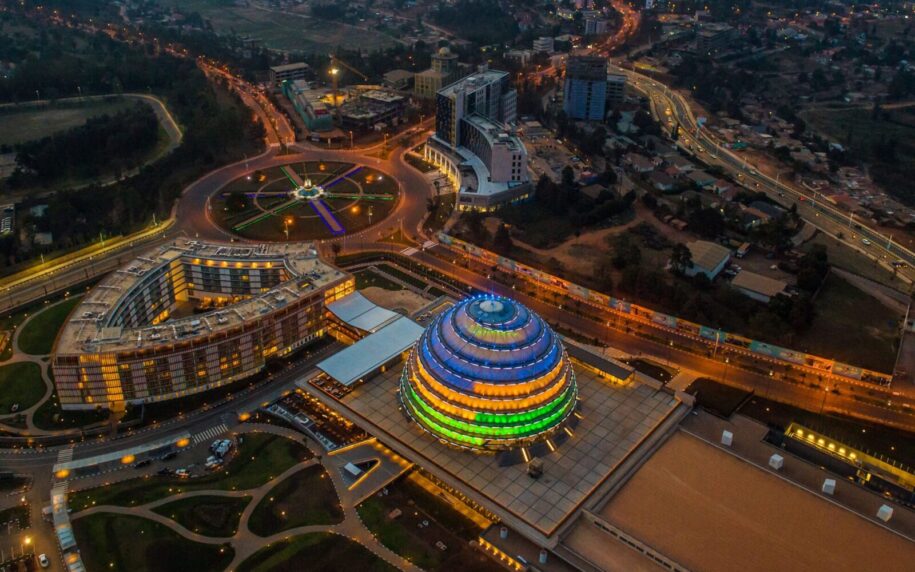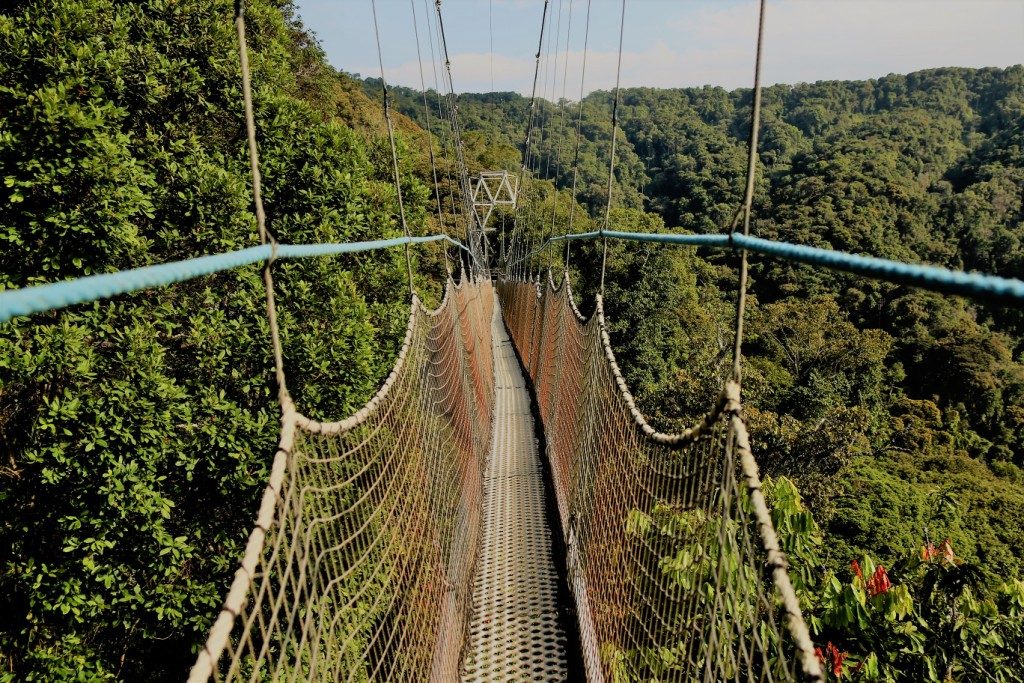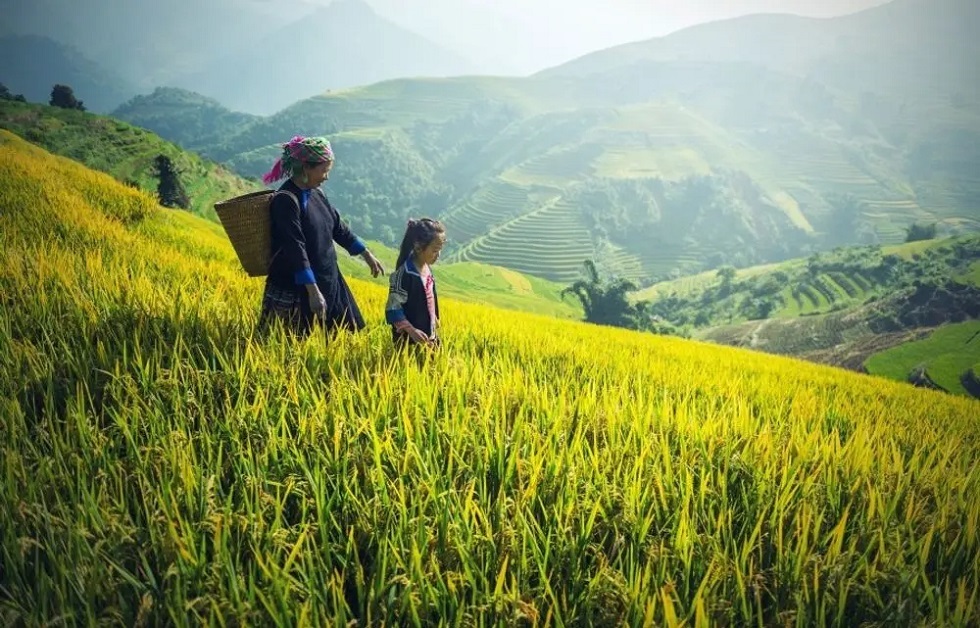A quick guide to sustainable travel in the land of a thousand hills
Rwanda benefits from being the fastest-growing country in the world. It receives 1.22 million visitors annually accounts for serious challenges to eco-tourism and the sustainability of its limited wildlife resources.
Rwanda has 4 national parks, some forest reserves, and rich cultural sites. These include the growing number of visitors associating Rwanda with a place of horrific human tragedy, the genocide of 1994. In Rwanda, many visitors pay their respect to victims during Kigali city tours at famous Gisozi, Mirambi, and Ntarama genocide memorials and commentaries.
Luckily, reducing your footprint in Rwanda is hardly avoided by travelers, with numerous adventure opportunities and the chance to benefit from a greener visit to Kigali city. Regarded as one of the most organized and clean cities to live in, Kigali has undergone significant transformation through modern infrastructure, public transportation, the Kigali Convention Center, and enhanced safety and security.
From cultural village home stays at Iby’Iwacu Cultural Village in Musanze, interacting with local farmers, women, children, former poachers, and Batwa forest dwellers, they have helped average harvests contribute to the conservation of endangered mountain gorillas, as well as other wildlife, and the recovery of Rwandan ecosystems.
Rwanda’s Green spaces
Possibly, there could be no better way to appreciate Rwanda than its well-managed natural ecosystems. With 4 national parks and several forest reserves, fresh water lakes, and 3 of the Virunga volcanic mountains, which dot its northwestern part, Rwanda was nicknamed the land of a thousand hills; the views are incredible, and there are more adventures than you would think.
Rwanda’s first protected swath of jungle, Volcanoes National Park, gazetted in 1925, is the most popular for mountain gorilla trekking. The 160 sq km park is a vast expanse of bamboo and rare montane forest, home to the remaining population of the critically endangered mountain gorillas, as well as golden monkeys, both of which are red-listed by the IUCN.
An inspiration behind the cult of conservation film, “Gorillas in the Mist”, about 200 mountain gorillas live in Volcanoes National Park, which is part of the Virunga Conservation Area, including Virunga National Park in eastern DR Congo.
Once poached to extinction, Dian Fossey’s legacy at Karisoke research center in Rwanda remains committed to monitoring of gorilla population across Virunga and Bwindi Impenetrable, the only places on earth providing habitat to the last remaining 880 mountain gorillas. Dian Fossey’s grave site is protected in Volcanoes National Park, Rwanda, and visitors hike to pay tribute, eventually creating their own gorillas in the mist.
Volcanoes National Park
Volcanoes National Park is made up of three dormant volcanoes ranging between 2500 to 4500 meters above sea level; they include Mt. Karisimbi, Mt. Bisoke, and Mt. Sabinyo. There are several hiking trails, starting from Kinigi, the main eco-tourism center, hikers can choose from easy to more strenuous multi-day hikes. Led by a Rwandan development board park ranger, you traverse large bamboo and Afro-montane vegetation; the views are impressive, stretching your eyes over the Virunga Massifs and crater lakes in the western Rift Valley.
With 178 species of birds, Volcanoes National Park is a twitcher’s paradise to spot over 10 Albertine Rift endemic birds such as the Rwenzori Turaco, Regal sunbird, and Strange weaver.
Nyungwe Forest National Park
The park is located in southeastern Rwanda, is another top pick. Nungywe forests are one of the oldest evergreen lowland and mountainous rainforests in Africa. It provides a home to a host of wildlife such as leopards, serval cats, warthogs, including 13 primates and 400 species of forest birds.
There are 13 species of primates, including chimpanzees. Most of these primates are elusive and nocturnal, but you can get up close with a chimpanzee, the main tourist attraction in the park.
Uwinka visitor center, set on the eastern mountain slopes of the park, hiking trails lead visitors to habituated communities of chimpanzees as well as spotting other primates, notably 400 troop of black and white Colobus monkeys, hard to spot in any other part of East Africa.
However, Nyungwe is not all about the primates; there’s plenty to see and do, and the park’s heavy rainfall creates spectacular waterfalls, and getting into the interior of the forest is easier with around 13 hiking trails. Visitors can choose from short, easy to difficult multi-day hikes, along with camping, exotic birding. While nothing beats the thrill of the Nyungwe forest canopy walk, with a range of suspended bridges about 60 to 90 meters above the forest ground offers ethical and close encounters of primates, birds, flowers, and breathtaking views of the whole forest.
Akagera National Park
Akagera National Park, once occupied by farmers, cattle herders, and poachers, leading to the extinction of lions and black rhinos during the 1970s, the park’s big five.
However, the park’s pristine wetlands, rivers, lakes, and savannah wilderness were restored and protected by the African Parks, which has restored lions as wellands plans to bring back black rhinos are underway. The park is now a shelter for big 4 mammals such as lions, elephants, buffalo, leopards, several antelopes, giraffes as well as 500 birds, including the rare shoebill stork and papyrus gonolek.
When visiting gorillas in Rwanda, or any other part of Rwanda, be sure to resist the temptation of disturbing the wildlife, as this can make them aggressive, especially habituated gorilla families. Visitors must also not dispose of their waste, including lunch boxes, biscuit covers, or water bottles, which are carried during gorilla trekking or hiking. For more information on gorilla safaris in Rwanda, Uganda, and DR Congo, visit www.ugandagorillassafari.com
Wildlife viewing and interactions in Rwanda
Not for many years, trekking mountain gorillas in Rwanda has been synonymous with the visitor experience. However, there’s now increasing evidence to prove that the activity is harmful to the survival of gorillas if not well maintained. Conservationists are concerned about frequent visits and the impact they have on gorilla behavior and the ecosystem. The Rwandan development board offers eco-friendly treks; spending time with gorillas is highly restricted. With gorilla trekking rules, every visitor must go through a briefing by guides, who you usually trek with to see gorillas.
Agro Tourism
Agriculture has been a major part of the Rwandan people’s way of life for centuries. And thanks to the growing number of agro-tourism projects in Musanze and Nyungwe National Park. Visitors who want to taste Rwanda’s traditional culture have to try everything. From dancing with cultural performers to preparing local cuisine, helping the farmers, former poachers, Batwa, and women’s groups.
Iby’Iwacu cultural village is the cultural hub of Rwanda; it is home to a locally owned pioneering mountain gorilla conservation project set up by Edwin Sabuhoro. He aimed to encourage people around Volcanoes National Park to switch to farming and provide community and cultural tourism services besides gorillas. People have increased their income-generating opportunities from fruit and vegetables, craft making, banana beer brewing, folklore, and visitors wanting to help can stay at Iby’Iwacu cultural village.
In Nyungwe forest national park, the Banda and Kitabi cultural village centers, a two-day home stay not only puts you into a rural lifestyle but also gives insight into the coffee farmers and their story of coffee from the field to the cup.
Eco-friendly accommodation
Opting for a home stay over a bigger hotel or lodge, even when visiting Rwanda for a short period, will allow you to experience a more traditional way of life in Rwanda. Home stays put the control of community tourism into the hands of the local people. With the dollars and Rwandan francs, if community tours are organized through the right tour operator. The Rwandan Development Board has helped set up several community tourism projects, including home stays, lodges, and camps around volcanoes and Nyungwe Forest National Park. Offering home stays in the foothills of Virunga volcanoes in the north to a fishing village on Lake Kivu in the west.
Sabinyo Community Livelihood Association (SACOLA) is an outstanding socio-economic and conservation project that owns the Sabinyo community lodge. It has helped to fund successful local gorilla conservation campaigns with the money generated from the lodge.
To be eco-friendly, the community in Rwanda does not sacrifice for luxury. There are impressive sustainable tourism programs at Gorilla Guardians Village in Musanze. These include clean water, health-care centers, tree planting, and conservation awareness programs.



